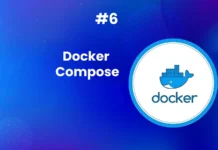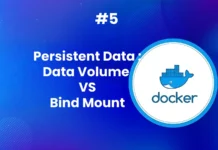Introduction to Docker Networking
Docker is a powerful platform that simplifies the deployment of containerized applications. However, understanding Docker’s networking model can take your Docker skills to the next level, allowing you to configure and optimize your applications better. In this article, we will break down the essential concepts of Docker networking, such as virtual networks, port forwarding, and firewalls. We will also explore useful Docker commands that help in managing network configurations.
If you’re just getting started with Docker networking, this guide is for you. Let’s dive in.
Basic Concepts: Ports, Firewalls, and the -p Option
Before diving into the more complex networking concepts, it’s important to get comfortable with the basics. Docker containers run isolated from the host system but may need to interact with each other or the outside world. This interaction happens through ports.
When you run a container using the docker run command, you might use the -p option to expose a specific port from the container to the host machine. For example:
$docker run -d -p 8080:80 nginxThis command exposes port 80 from the Nginx container and maps it to port 8080 on the host. Any traffic coming to the host on port 8080 will be forwarded to port 80 inside the container.
Firewall and NAT Concepts
Docker also manages a basic firewall configuration for containers using Network Address Translation (NAT). By default, traffic from the containers is NATed, meaning the containers get an internal IP, and the host system handles how data flows in and out of the network. This setup prevents containers from being exposed directly to the external network unless configured otherwise.
Docker’s Batteries-Included but Removable Concept
Docker is designed to work out-of-the-box with reasonable defaults, often referred to as the “batteries included but removable” approach. This means you can start with Docker’s default network settings and not worry about customization right away. However, as your application grows, Docker provides flexibility for more fine-grained control over your network settings.
For example, by default, Docker containers run on a “bridge” network, which connects containers to the host through a virtual network. However, you can customize how containers communicate, create isolated networks for different applications, or tweak security settings.
Understanding Docker Networks and Virtual Networks
The Bridge Network
By default, containers are connected to a “bridge” network. This bridge network acts as a virtual switch, allowing containers on the same host to communicate with each other. Containers connected to this network are NATed, meaning they use the host’s IP address for outbound connections, while remaining isolated from the external network.
If you launch multiple containers without specifying custom network options, they will be placed on this bridge network and can freely communicate with each other:
$docker run -d --name webserver nginx
$docker run -d --name dbserver mysqlIn this case, both containers (Nginx and MySQL) will be able to communicate, as they’re on the same bridge network.
Creating Custom Docker Networks
For more control over your container networking, Docker allows you to create custom networks. You can create multiple virtual networks to isolate applications. For example, if you have an application using PHP and MySQL, you may want them to communicate within the same network without exposing them to the external world.
Let’s create a custom network and connect containers:
$ docker network create my-app-network
$ docker run -d --name php --network=my-app-network php-apache
$ docker run -d --name mysql --network=my-app-network mysql
In this scenario, both containers can freely talk to each other within my-app-network, without needing to expose their ports to the host.
Isolating Unrelated Containers
You may have other applications running on the same Docker host, such as a Node.js and MongoDB setup. You can create a separate network to isolate these applications:
$ docker network create another-app-network
$ docker run -d --name nodeapp --network=another-app-network node
$ docker run -d --name mongo --network=another-app-network mongo
This setup ensures that the PHP-MySQL and Node-Mongo applications are isolated from each other and can only communicate within their respective networks.
The -p Option and Exposing Ports
As mentioned earlier, Docker allows you to expose container ports to the host machine using the -p option. However, it’s important to note that each port on the host can only be used by one container at a time. If you attempt to bind two containers to the same host port, you’ll receive an error.
For example, this command will fail if a container is already using port 80:
$docker run -d -p 80:80 nginx
Docker prevents conflicts by ensuring that only one container can bind to a specific port on the host.
To check which ports are exposed by a running container, you can use the following command:
$docker container port <container_name>
This will display the mapped host port and the corresponding container port.
Inspecting Container IP Addresses
Containers in Docker are assigned unique IP addresses on their respective networks. To get the IP address of a container, you can use the docker inspect command with a custom format option to retrieve the specific field you’re interested in, like so:
$docker inspect --format='{{.NetworkSettings.IPAddress}}' <container_name>
This command will output the container’s IP address, which can be useful for debugging or network configuration purposes.
Advanced Networking Features: Docker Network Drivers
Docker provides several network drivers, each offering different features. The default bridge driver works for most use cases, but Docker also supports other drivers like overlay, which enables multi-host networking for scaling across multiple machines, and host, which lets the container use the host’s network stack directly.
For example, the host driver is useful when you want to bypass Docker’s virtual networking and connect the container directly to the host’s network:
$docker run --network host nginx
This command runs the Nginx container using the host network, meaning it will not be isolated in a Docker virtual network.
DNS in Docker Networks: Why Naming Beats IPs
When working with Docker networks, understanding how containers communicate is essential—especially when it comes to DNS (Domain Name System). This section dives into the role of DNS within Docker’s virtual networks, showing why relying on IP addresses can be unreliable and how container names make communication easier.
The Challenges of Using IP Addresses in Docker
In containerized environments, containers are created, stopped, and restarted frequently. Each time a container is spun up, there’s a good chance its IP address will change. This volatility makes IP-based communication between containers impractical. For instance, if you’re managing a microservice architecture with several containers talking to each other, tracking their IP addresses would become a headache, especially in dynamic environments like Docker Swarm or Kubernetes clusters.
DNS: The Key to Dynamic Container Communication
Thankfully, Docker provides a built-in solution to this challenge: DNS-based container communication. Docker assigns a unique name to each container, which acts like a hostname. Containers in the same network can use these names to communicate, bypassing the need to deal with fluctuating IP addresses. This is especially useful in microservice-oriented architectures, where multiple containers must work together seamlessly without worrying about infrastructure details.
Custom vs. Default Networks: How They Handle DNS
There’s a key distinction between custom and default networks in Docker when it comes to DNS functionality:
- Default
bridgenetwork: While Docker’s default bridge network is useful for basic container communication, it doesn’t include automatic DNS resolution by default. To enable DNS-like communication in this network, you need to manually link containers using the--linkoption. However, this approach is cumbersome and doesn’t scale well. - Custom networks: When you create a custom network in Docker, DNS resolution between containers is handled automatically. Containers on the same custom network can easily communicate by referencing each other by name, making your life much easier in dynamic environments. This also eliminates the need to manually link containers or track IP changes.
DNS in Action: A Practical Example
Let’s consider a scenario where we create a custom network called my_app_net. Once we launch two Nginx containers in this network, they can communicate using their container names, rather than their ever-changing IP addresses.
For example:
docker network create my_app_net
docker container run --name nginx1 --network my_app_net nginx
docker container run --name nginx2 --network my_app_net nginxIn this setup, nginx1 can ping nginx2 using the container name instead of an IP address:
docker exec -it nginx1 ping nginx2The DNS resolution is automatic and ensures seamless communication between containers, even if one of them is restarted and assigned a new IP.
Why Custom Networks Simplify Networking
By creating custom networks for your Docker applications, you can avoid the hassle of manually configuring container links or relying on IP addresses. Docker Compose, a popular tool for managing multi-container Docker applications, takes this a step further by automatically generating networks for you, streamlining communication between containers.
In environments where containers are constantly being created, moved, or restarted, DNS-based communication through custom networks ensures that services can always find each other reliably, without requiring constant reconfiguration.
Key Takeaways: Ditch the IPs, Embrace DNS
When designing Docker-based applications, avoid relying on IP addresses for container communication. Instead, leverage Docker’s DNS features by creating custom networks where container names are resolved automatically. This practice simplifies networking, reduces manual configuration, and ensures that your services can consistently communicate in dynamic, containerized environments.
In the next section, we’ll explore how Docker Compose enhances networking and simplifies multi-container orchestration, making DNS-based communication even more effortless.
Conclusion
In this article, we covered the basics of Docker networking, including port mapping, firewall concepts, and virtual networks. Docker’s flexible networking capabilities make it easy to configure containers, whether you’re working on a simple local development project or setting up a complex multi-host production environment.
Understanding how containers communicate within and outside the host system is key to building efficient and secure applications. Stay tuned as we dive into more advanced Docker commands and features in upcoming articles.





[…] already familiar with Docker and have it set up, feel free to skip ahead to the next article on Docker networking. Otherwise, let’s focus on setting up Docker and covering its core […]
[…] recommend reading the first article on Docker Introduction and Setup and the second article on Docker Networking to get a solid foundation. Now, let’s get into containers, the heart of […]
[…] Understanding Docker Networking: Virtual Networks, Ports, and Firewalls Explained […]